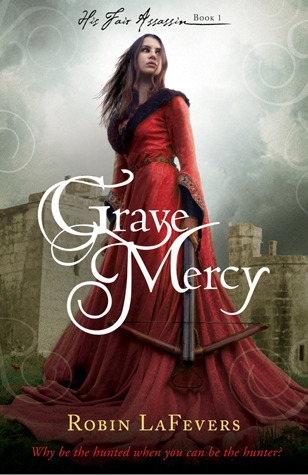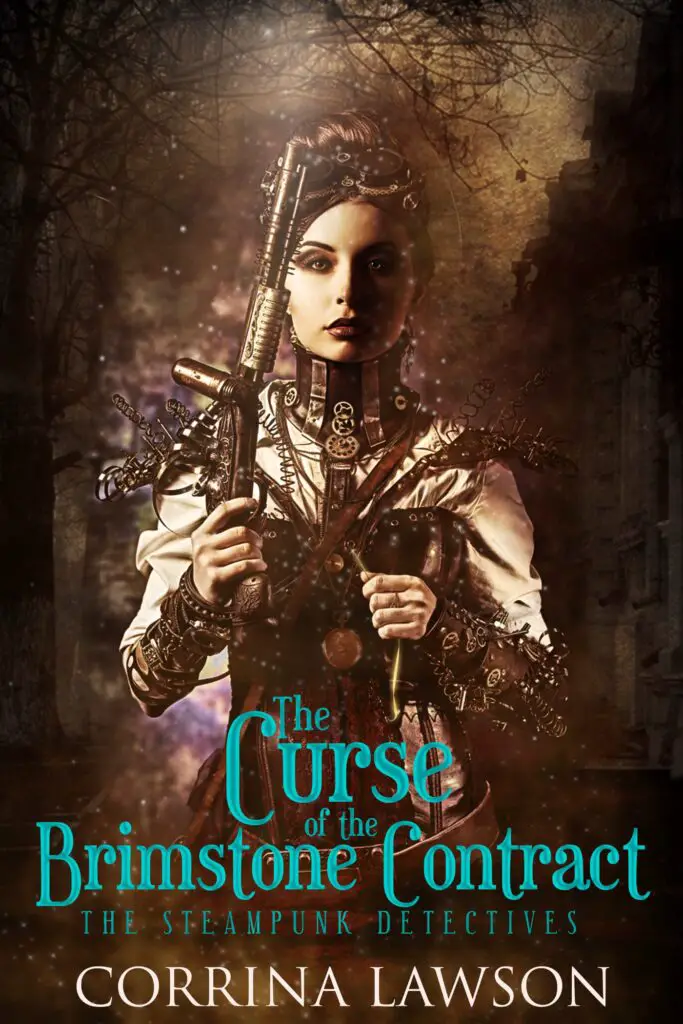Setting is character. That’s what a wonderful writer friend of mine, Robin LaFevers, told me when I was struggling with setting.
In this Article:
Why Setting Matters
I’m a dialogue-oriented reader. Sometimes, I skip whole chunks of descriptive text in stories. (Hi, George R.R. Martin.) I want stories that move. I want interaction, either talking or action or explosions or whatnot. Who needs all those descriptions to slow it down?
But descriptions are not setting.
Setting is all the things that make up the character’s world. That includes not only what place they’re in at a specific moment but also the world they grew up in and the world that they dream about in the future. Setting includes their home, their siblings, their job, their friends, and their loves. It even includes the weather.

Setting is how a character perceives the physical world around them, at every level of their being.
This is from the opening of Robin’s Grave Mercy, where an ominous wedding is taking place:
As he mutters the ceremony’s final words, I stare at the rough hempen prayer cord with the nine wooden beads that proclaim him a follower of the old ways. Even when he ties the cord around our hands and lays the blessings of God and the nine old saints upon our union, I keep my gaze downcast, afraid to see the smugness in my father’s eyes or what my husband’s face might reveal.
The description is so soaked in the character’s perception that the other details don’t matter. What matters is what the narrator is perceiving around them.
I took an easy swipe at Martin above, but while he does overdo the descriptive text, he also knows exactly what he’s doing with setting as character. Consider the Starks of A Song of Ice and Fire. The Starks have always existed in the cold, harsh north. Their characters are shaped by the unyielding force of the coming winter, so much so that “Winter is Coming” is their family motto. Pull the Starks out of the North and they are different people.
How Setting Informs a Character
Setting is the immediate surroundings filtered through how a character perceives them. When writing a character’s impression of a place, the setting is going to be reflected through who they are.
For instance, an objective description of Grand Central Terminal would be the same across numerous guidebooks. But if I entered Grand Central Terminal in New York City with a friend, our reactions would be different. I might remember the first time I brought my kids in New York City, how I always forget what entrance is the best to walk to Times Square, and how I have to consult Google maps to know if I have to turn right or left.
My friend might look at all the subway entrances and automatically calculate what trains they need to travel to a specific spot in the city. Another person might be fascinated by the people bustling around while those same crowds might annoy others.
Setting in a novel isn’t describing what Grand Central Terminal looks like. It’s writing about how Grand Central Terminal looks to the point of view character.
How to Write Setting
Years ago, I sat down to write my first steampunk story, the book that become The Curse of the Brimstone Contract. My first idea, arrogantly, was that I’d create a Sherlock Holmes story and “steampunk it up.” (You can groan at my arrogance.)
This story was supposed to be a short story or a novella, to follow in the footsteps of Arthur Conan Doyle’s Sherlock Holmes stories. I’d envisioned a Sherlock Holmes analog in a world where steam technology had taken off, as well as a client who needed his help with a murder mystery.

I hit a standstill quickly. I couldn’t write a detective if I didn’t know what world existed around them. I couldn’t write a mystery and provide clues if I lacked the knowledge of how the world worked. I had to step back and answer the questions of why and how steam technology had developed, who had access to the new technology, and the changes that might have happened to London society because of it.
Most importantly, I needed to know my character’s specific reactions to these technological developments. Did they have an uneasy relationship with how fast the world was changing? How had the changes affected their upbringing? Or, if the changes happened recently, how did that change not only their worldview but the worldview of the other characters? People don’t exist in a vacuum: how others react to events is part of how we react too.
It wasn’t until I answered those questions that I could finish the story.
The setting also is part of contemporary novels as well, as writers create specific worlds in a specific place. It’s not enough, for instance, to write a story set in a small town or a big city. The details must be filled in.
The world of Los Angeles that Harry Bosch occupies in Michael Connelly’s books is not the same Los Angeles that exists for you and I. Bosch’s character is so informed by his setting that he practically lives and breathes his world. If he’d been raised somewhere else, experienced things other than his corner of Los Angeles, his reactions to events would be different.
I’ve seen the sheets that many writers use to fill out character traits. Those can be helpful and a good start. But they’re only a start because physical characteristics will only take you so far.
I have brown eyes, for instance. And if you ask, I’ll say I have brown eyes. But I’ll also remember my husband likes to sing lines from “Brown-Eyed Girl” when he’s being romantic. I’m objectively 5’2” but what that means to me is I can’t reach top shelves in stores and I’m always looking up at people.
Layering In Setting
I can go a whole draft without knowing everything about my characters or their world. Instead, I use the first draft to get the basic plot on the page and then fill them out.
That first draft is the pencils to the inks and colors that finish off the product. Using Curse of the Brimstone Contract as an example again, drafting the short story allowed me to outline the basics of my idea. My client, Joan Krieger, comes to consulting detective Gregor Sherringford because two clients of her family’s dressmaking business have been murdered. Joan and Gregor’s interaction fuels the book and this allowed me to play with how they related to each other.
The first draft also allowed me to decide Joan had a mother and father who were quietly estranged, that Joan longed to change fashion, and that something was very wrong inside the family business. I started with the idea that Gregor, like his inspiration, always helped the underdog, and that Gregor often kept relevant facts and information from the other characters.
What came later, after I had answers to the worldbuilding, were the details of how the murder happened, the clues that led to the solution of the crime, and how Joan reacted given the revelations of the story. My favorite scene in that book is when Joan first encounters Gregor, a scene that was originally chapter one but had to be pushed back to chapter three so the reader could experience the world through Joan’s eyes. I had the basics of the first meeting but it wasn’t until I sorted through all the worldbuilding that I could flesh it out.
Bottom line: Setting is character.
~ Corrina Lawson
Books Where Setting Is Character
Other LitStack Resources
Be sure and look at other articles for writers by writers in our LitStack Toolkit, a treasure trove of writing about writing.

